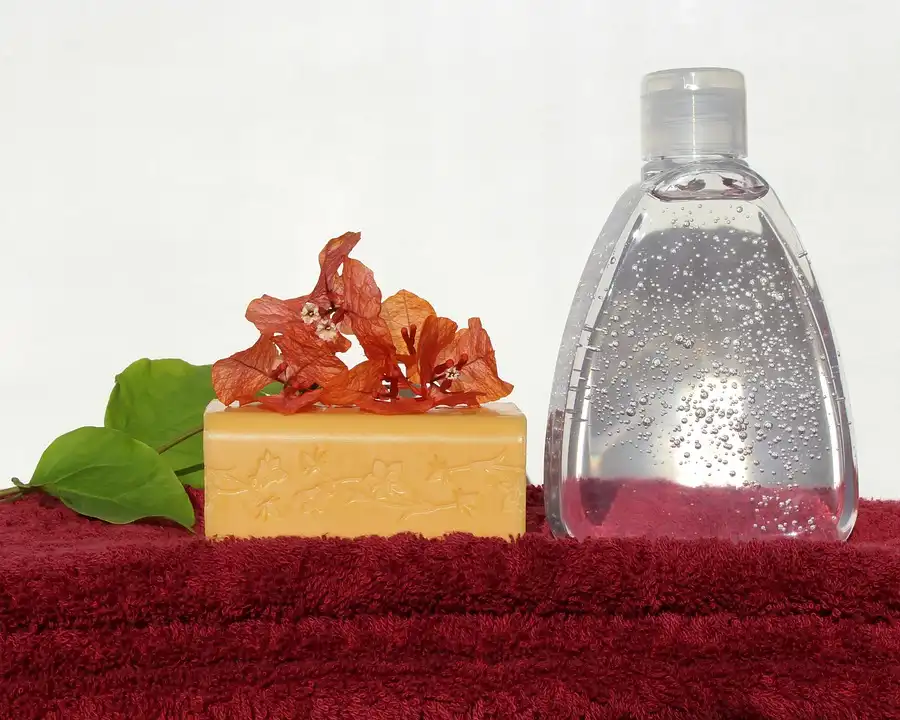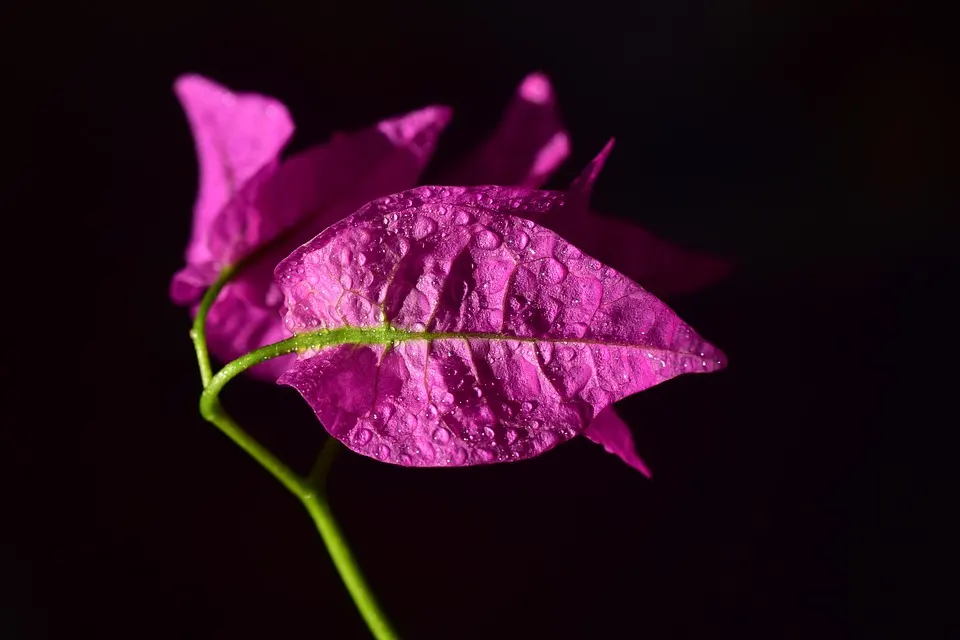Can You Grow Bougainvillea Bonsais Indoors?
As bonsai alchemists, we always look for new wisdom surrounding bonsais and the plants we love most. One of my personal favorite plants is the bougainvillea. I feel what can only be described as an electric jolt when I see a lone bract on the pavement on my afternoon strolls. That one split-second flash of magenta stirs up a search for the parent tree that can last hours. I find such joy in seeing so many around where I live.
I love bougainvilleas so much because they are so evocative of emotion and various human responses ranging from the most vocal displays of exuberance to absolute silent admiration. Some people simply smile when they see the signature bright blooms, other people turn into children again. Nature seems to have this power over the human spirit. Or maybe it’s not power wielded over us, but rather an energy that elevates our emotional frequencies and amplifies our innermost good vibes. Nature is a healer.
Bougainvilleas are typically outdoorsy plants, but there is immense benefit in allowing these beauties to take root inside your space. Below we’ll discuss how to make sure your plants survive inside. These babies are used to growing in warm and relatively dry climates, so inside might be a bit of an adjustment.
Growing Bougainvillea Indoors
Bougainvilleas are far from your typical houseplants. Avid sprawling climbers, they can be found in their natural state on building exteriors, where they climb up trellises or fences. They’re also a fairly common feature of tropical and sub-tropical gardens. Bougainvillea originated in South America and was named for Louis Antoine de Bougainville, a sailor, and explorer during the late 1700s. A bougainvillea is best planted in the spring, as it grows quickly, often adding more than 36 inches to its length per year.
You don’t have to live in a warm climate to grow bougainvillea successfully; the shrub can be grown successfully in containers indoors if the right conditions are maintained.
Planting Bougainvillea Indoors
Bougainvilleas are easy to plant indoors. Ensure that you get your hands on soil rich in organic material that drains easily. Bougainvilleas don’t do well in clay-like soil that is too dense. Soils that hold water too well promote root rot in bougainvilleas.
Hanging baskets of 10 “-12” in size or clay pots of 5-10 gallons are the best containers for Bougainvillea plants. They prefer clay containers because the soil dries out more quickly. Bougainvilleas don’t like their roots to be disturbed and tend to flower more often when they are root-bound.
Growing Bougainvilleas from Cuttings
Unless you already have a small bougainvillea plant to move indoors, you’ll likely need to grow one from cuttings taken from a full-size garden-bound shrub. This section will focus on where to take cuttings from and how to do it properly to ensure your plant thrives. The best way to ensure the quality of a new bougainvillea is to grow it from cuttings. Plants grown from seed introduce an entirely new species to your collection, while cuttings are taken from a plant you already know is thriving.
It is likely that the new plant will maintain any special characteristics your bougainvillea shrub has, like being especially bushy or hardy. In addition, bougainvilleas propagated by cuttings normally reach maturity and flower faster than those propagated by seeds.
Stem Cuttings
Generally speaking, woody plants or herbaceous plants can be used for cuttings in horticulture. Woody plants are trees and shrubs, while herbaceous plants include all types of houseplants and garden flowers. Plants typically develop stronger and harder new growths during the warmer months, so not all cuttings will root.
Plants with herbaceous stems can be harvested all year round because they are softer and more supple. However, you should ensure that you only take cuttings when the plant is actively growing. It’s important to note that while herbaceous plants are soft for the entire year, not all herbaceous plants are perennials.
Softwood Cuttings
Cuttings are taken from woody plants whose soft, fresh growth has recently sprouted. Softwood cuttings are best harvested from plants just beginning to harden; this usually occurs around May to July. Look for shoots that snap easily when bent if you are looking for softwood cuttings. Other ways to distinguish softwood from hardwood include the fact that softwood cuttings don’t have fully mature leaves.
When harvesting softwood cuttings from your bougainvillea shrub, look for areas that aren’t green but aren’t overly woody. To reap the most benefits from your cuttings, select ones that are between four and five inches long. Bougainvillea cuttings can be taken at any time of year, although May and July are the best months for most plants.
Semi-hardwood Cuttings
After the wood has matured in its current season is the perfect time to harvest semi-hardwood cuttings from your bougainvillea shrub. It is easy to tell a semi-hardwood from softwood by the size of the leaves and the firmness of the wood. For most plants, mid-July to early October is optimal to harvest semi-hardwood cuttings.
Semi-hardwood cuttings can be used to propagate most broadleaf evergreen plants. If properly harvested, semi-hardwood cuttings from bougainvillea would be acceptable as it’s an evergreen broadleaf shrub or vine.
Hardwood Cuttings
You can think of hardwood cuttings as finely aged wine. Those are the plant parts that were newly sprouted the summer before being harvested. Cuttings of hardwood plants should be taken during winter when the plant is still in its dormant state.
Also, early in the spring is a good time to take hardwood cuttings because the plant will technically still be dormant. Propagating deciduous shrubs with hardwood cuttings is an excellent method. These shrubs, such as bougainvilleas, shed their leaves in the winter, a natural process known as abscission.

Encouraging Bougainvillea Cuttings to Root Indoors
Bougainvilleas can be rooted from cuttings relatively easily. Even amateur horticulturists, or anyone interested in bringing lush, vibrant new life into the world, can do this.
Soil
We’ve covered that bougainvillea cuttings should not be rooted in soil that retains water. To thrive, bougainvilleas require adequate air circulation due to their relatively thin roots. It is also important to keep in mind that these are drought-resistant plants, so the soil you use should drain well.
Mixtures that contain peat are to be avoided. Root rot is likely to occur if your bougainvilleas are rooted in soil containing peat. For healthy bougainvillea rooting, any other water-retaining substance is also not recommended. Do not use saucers when you root your bougainvilleas, as you may end up with waterlogged plants.
Harvesting Your Cuttings
You can take softwood, semi-hardwood, or hardwood cuttings when you harvest bougainvillea stems. For softwood, you should take four to five-inch pieces; for semi-Hardwood and hardwood, you should take six to eight-inch pieces. Cuttings should be about the thickness of a pencil and should be taken just below a node in the wood. If needed, prune with a knife or with pruning shears. Each cutting should have between five and seven nodes; this is where the plant’s natural growth hormones are located.
Preparing Your Bougainvillea Cuttings
Rooting the new bougainvillea plant requires preparing the freshly harvested cuttings. Plants have a limited amount of energy to expend during the growing process. You will not have a new bougainvillea if there are too many leaves to support. Without roots, the bougainvillea won’t grow.
This is also why you shouldn’t take a stem that has flowered; the bulk of the stem’s energy has gone into producing colorful bracts, and there won’t be enough left to root the plant. Keeping all the leaves intact will result in a faster water loss than a properly prepared cutting with only a few leaves.
Remove all the bottom leaves from the cuttings to avoid future rooting issues. A slight angle should be cut at the bottom of the stem; any angle will do. Last but not least, lightly scrape the lower part of the stem, which exposes the fibrous internal structure. This encourages root development by lightly wounding the stem. Similarly, to strengthen the muscles in our bodies, we need to hurt them a bit if we hope to be stronger than before. About one inch of the stem needs to be scraped clean.
Planting your Cuttings
If you have chosen a pot to root your bougainvillea in, you should now dig a hole in the soil. In general, the hole should be a little thicker than a pencil, and it should extend down to half an inch above the bottom of the pot. The next step is to dip the lower inch of the bougainvillea cutting into an appropriate rooting hormone.
IBA is a very useful root stimulant as it reduces propagation bench time and eliminates cutting losses. A root stimulant such as IBA decreases propagation bench time and eliminates cutting losses while strengthening the plant’s ability to fight off disease. IBA is available in the form of powder, liquid, and talc.
However, if you do not want to use rooting hormones or do not have immediate access to them, there are a few natural alternatives. Honey, cinnamon, aloe vera, apple cider vinegar, and even your own saliva are effective in rooting all types of plants. It isn’t a good idea to use sweet products like honey if you have an ant problem because the ants will use the roots of your cuttings to sustain themselves.
Shake off any excess from your cuttings after you’ve dipped them in your rooting hormone, commercial or otherwise. Then insert them into the hole you made. Set the cuttings into place by pressing the soil around them with your hands, and do not force them deeper than they will easily go. The best way to achieve the best results is to use between four and five cuttings per pot. If you propagate bougainvillea from softwood cuttings, it is possible to do so without relying on rooting hormones.
After you have your cutting comfortably positioned in your pot, you will need either a large plastic bottle cut in half or a clear plastic bag to create a makeshift greenhouse. The soil should be watered moderately before tying the bag around the pot or placing the half bottle on top of it. In this way, your cuttings will have enough moisture to root properly, but not so much that root rot sets in. Once root growth has been confirmed, you will not need to water your new enclosed ecosystem.
You should place the pot out of direct sunlight but where it can still receive strong light. The ecosystem should be opened every ten to twelve days. Spraying water on the soil if it appears dry is a good idea. Remember not to overwater your newly planted bougainvillea cuttings; however, you don’t want them to rot.
It takes approximately seven to ten weeks for roots to develop. Temperature plays a major role in this. Root growth is further stimulated by moderate heat applied to the bottom of the pot in regions where temperatures are cooler on average. A heated water bottle can be used for this purpose.
You will be able to tell when your bougainvillea plant is rooting when the leaves begin to grow. When four to six sets of vibrant green leaves form on your bougainvillea plant, it’s time to remove it from the rooting pot. Discard the clear plastic bag or bottle.
Your plant can be watered more frequently once out of its makeshift greenhouse. Water your plant lightly every day at this point. You should get your new plant used to the level of sunlight you want it to thrive in before you move it out of its temporary home. Put your plant in direct sunlight in the morning so that it can absorb the sun’s healthy rays.
Leave it in place for about a week. After that, your bougainvillea plant is ready to be moved to a bigger, more decorative pot that will be its forever home.
Transplanting Your Indoor Bougainvillea Bonsai
To prevent tearing or breaking roots when you move your plant, tap the pot’s sides a couple of times to loosen the soil and loosen the roots. Gently tilt your plant upside down to loosen the roots. Place the plant stems between your fingers and gently wiggle the roots and stems out of the pot. Now you can plant your new plant in a prettier pot. You should bear in mind not to use a massive pot unless you want your plant to grow fairly large. This would be perfect for a double volume foyer or anything similar.
Repotting is usually a way to control the growth of your plant’s roots, especially if you’re planning on turning the plant into a bonsai. But bougainvilleas really don’t like their roots being tampered with more than the initial rooting stage. So pick a pot that supports the rooting and the eventual size you want your shrub or bonsai to reach.
If you’re growing a bonsai, you’ll use different pot shapes and sizes to accommodate different bonsai growing and training styles. Luckily, because we are an extensive community of bonsai enthusiasts, we can walk you through picking the perfect pot for your bonsai.

Bougainvillea Indoor Care Guide
Despite its showy appearance, bougainvillea is not particularly difficult to maintain. In the year’s warmer months, the vine-like shrub usually blooms three times and often goes dormant and loses its leaves, bracts, and flowers in the cooler months. It thrives best in tropical or semitropical environments and needs lots of sunshine no matter where it is grown.
Bougainvilleas need to be trimmed to maintain their shape, but overly aggressive pruning will fade the bloom color. Pruning should be done in the fall after the growing season is over so the plant can bloom from new growth next year. With the basics taken care of, here is a comprehensive indoor care guide to ensure your bougainvillea thrives.
Sunlight
Bougainvillea plants need full daily exposure to sunlight to thrive. As a result, many growers move their potted bougainvillea outside in the summer months to get enough sunlight. Consider keeping your plant indoors full time during the winter months and rotating it throughout the house throughout the day.
Alternatively, you could place the pot under a big window where it will get the most sun. A bougainvillea’s color saturation is heavily dependant on sunlight. The more sun you expose your plant to, the more vibrant and almost luminescent your bougainvillea’s bracts will be.
Water
Maintain an even moisture level during spring, summer, and fall and nearly dry conditions during winter. If you’re having trouble maintaining blooms during the flowering season, allow the soil to dry out completely and then water your plant vigorously. Too much water too often will push the plant to develop more dense foliage and fewer blooms.
As we discussed above, leaves aid in water evaporation. Your plant will grow more leaves when it’s water too much to increase how fast water is evaporated so that it can regain a stable existence. Listen to your plant; more often than not, these beauties tell you exactly what they need and what they’re getting too much of.
Humidity and Temperature
Bougainvillea is a relatively hardy plant, withstanding temperatures ranging from tropical highs of 80 degrees Fahrenheit to lows of 40 degrees Fahrenheit. If you wish to grow bougainvillea indoors, it is recommended that you keep the temperature below 70 degrees Fahrenheit.
In a dry climate, a humidifier near your bougainvillea may be helpful. It’s not necessary to spritz your plant with water to simulate humidity, but due to its humid natural conditions, a humidifier would work wonders.
Bougainvillea and Feng Shui
Due to its rather prominent thorns, bougainvillea is not a plant you’d expect to see associated with Feng Shui. However, we are nothing if not adventurous, so let’s see how this beautiful blooming shrub can influence the overall energy and good vibes in your home.
The Mythical Dragon
If its beauty and vibrance aren’t enough to convince you to bring bougainvillea into your home, maybe this will be; Bougainvillea is seen as symbolic of a dragon. Its intricately structured bracts are reminiscent of the auspicious dragon’s scales. This is an incredibly powerful association in Feng Shui due to the importance of the mystical dragon.
The dragon is one of the most well-known and widely-used symbols in Feng Shui. It represents abundance, good luck, and overall success. You don’t need to bring a physical dragon sculpture into your house, though. There are more universally appreciated ways to incorporate this strong image and intensely productive energy into your decor. Why not plant your brand new bougainvillea bush in a beautiful vase or pot adorned with dragons?
Dragons are the only mythical creatures in the Chinese zodiac. They are the fourth in line, after the rabbit, and before the snake. There is a legend that the dragon could have easily been first but stopped along the way to fling a helpful gust of air to carry the rabbit across the vast river on a floating branch. A short time later, the dragon took yet another detour and commanded rain to nourish a village suffering from a drought. Therefore, the dragon is a rainmaker that brings success and prosperity by calling forth the most powerful winds of change.
In Asian culture, dragons are viewed as benevolent forces instead of their more savage European counterparts. The dragon is associated with the earth element and the east direction, where the sun rises in feng shui. Dragons appear as bearded snakes with four legs.
The dragon is the strongest representation of the masculine yang energy and balances out its feminine counterpart, the phoenix, the most powerful symbol of yin energy. They also represent the imperial family: the dragon symbolizes the emperor, while the phoenix represents the empress.
Going Against the Feng Shui Grain
Even with the powerful associations with the dragon, bougainvillea is not counted as a dragon symbol in traditional Feng Shui. Instead, many Feng Shui experts recommend that you refrain from placing thorny plants inside your home. This is because thorns and spines are seen as firing projectiles of harmful energy into a space. So instead of cultivating peace and harmony in your house, thorns encourage hostility.
There is, however, a different way to look at thorns. Thorns carry strong protective energy, and when coupled with the powerful energy of abundance and success of the bougainvillea bracts, you have a completely different energy taking shape. While you wouldn’t place a bougainvillea in the heart of the home, it would be perfectly fine to place it in a window, next to an entrance, or on a balcony.
These plants can create energy filters in transitional spaces that dilute negative energy by piercing it with carefully cultivated positive, patient and protective energy. Remember, with any plant you tend to, especially the noble art of bonsai, the energy you put into maintaining and training the plant is the energy you get back from it.
Many contemporaries of classical energy work also believe thorns to be powerful cleansing agents. Therefore, Bougainvillea plants can be placed in corners to prevent energy stagnation and ensure productive, positive, and abundant energy fills every corner of your space. This cleansing energy, some argue, also extends to diffusing tensions within the home, thereby fostering better relationships with family and friends.
Final Word
The bougainvillea, in any form, carries the class of energies that we want within our homes. Even though bougainvilleas proudly carry thorns, which are elements Feng Shui experts say to avoid indoors, they are reminiscent of the great mythical Chinese dragon. This means they promote a life of abundance, good fortune, and overall happiness.
Keeping bougainvilleas happy isn’t a massive undertaking. Take care not to water them too much, give them soil that drains easily, and provide them with enough sunlight, and you’ll be rewarded with bracts that bloom in the most vibrant, saturated colors.







